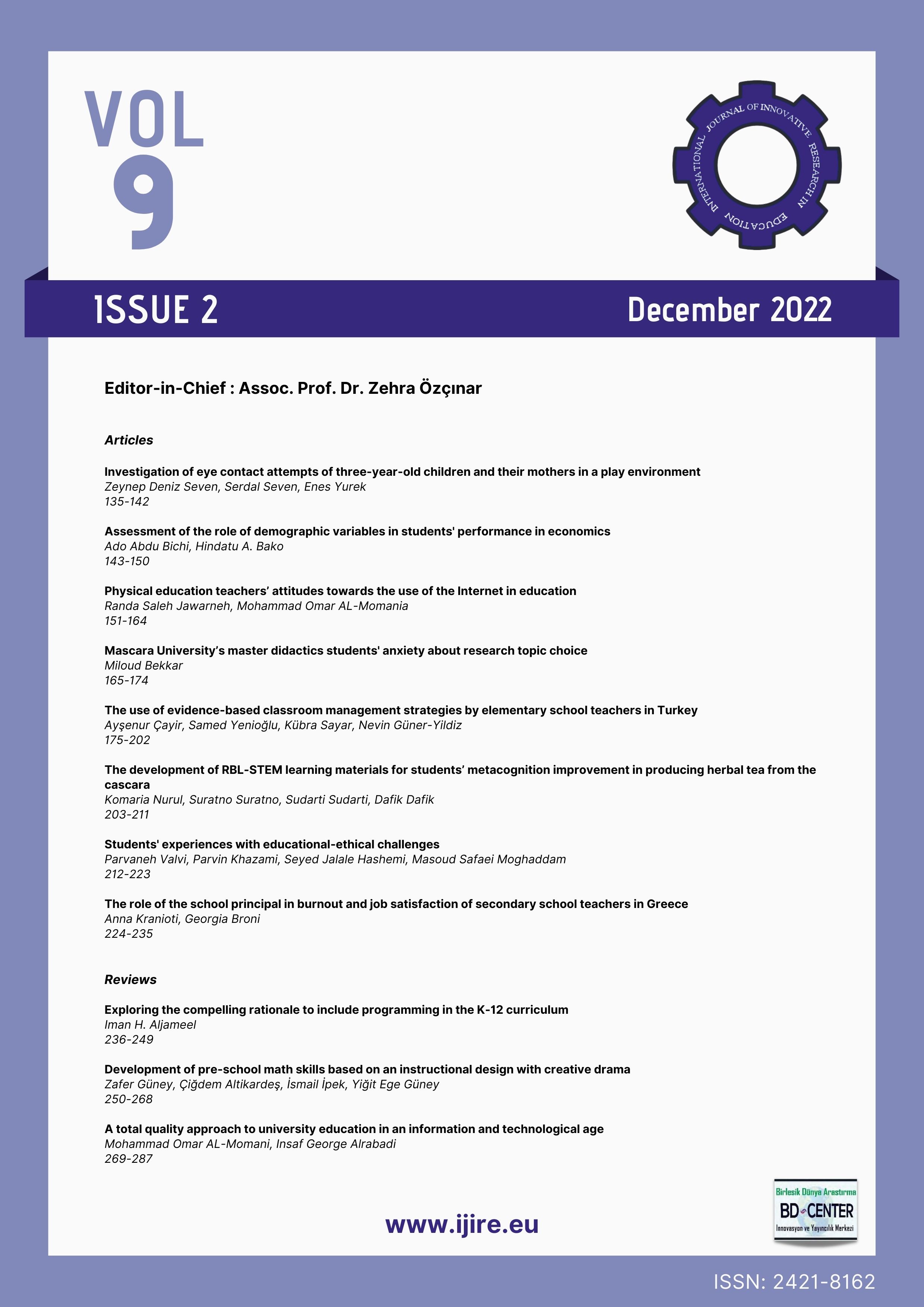Investigation of eye contact attempts of three-year-old children and their mothers in a play environment
Main Article Content
Abstract
Eye contact has been defined as an exchange that mediates a significant part of non-verbal procedures between people. Though studies have been carried out on eye contact between adults, the number of studies dealing with the quality, process and messages of eye contact between children and attachment figures is limited. The goal of this study is to analyse the quality, process and messages of eye contact between three-year-old children and their mothers during their interaction in a play setting. It is a qualitative case study. Micro analysis was used as the analysis method. 14 three-year-old children, 8 girls and 6 boys, participated in the study with their mothers. A 10-minute play process was recorded in a standard setting with standard materials. Records were evaluated in periods cut with micro analysis method and transformed into graphics. Study results showed 374 attempts to make eye contact between children and their mothers. It was understood that majority of these attempts were initiated by the mothers and the success/failure rate of these attempts were close each other. It was observed that success rate of eye contact was higher when it was initiated by children and failure rate of eye contact was higher in cases when it was initiated by mothers. Causes of making eye contact shows that mothers were more likely to make eye contact when they ask questions, wait for an answer and control the child and children tried to make eye contact when they ask for approval of their mothers, chat and exchange ideas with them.
Keywords: Mother, child, interaction, eye contact.
Downloads
Article Details

This work is licensed under a Creative Commons Attribution 4.0 International License.
The International Journal of Innovative Research in Education is an Open Access Journal. All articles can be downloaded free of charge. Articles published in the Journal are Open-Access articles distributed under CC-BY license [Attribution 4.0 International (CC BY 4.0)].
Birlesik Dunya Yenilik Arastirma ve Yayincilik Merkezi (BD-Center) is a gold open access publisher. At the point of publication, all articles from our portfolio of journals are immediately and permanently accessible online free of charge. BD-Center articles are published under the CC-BY license [Attribution 4.0 International (CC BY 4.0)], which permits unrestricted use, distribution, and reproduction in any medium, provided the original authors and the source are credited.
